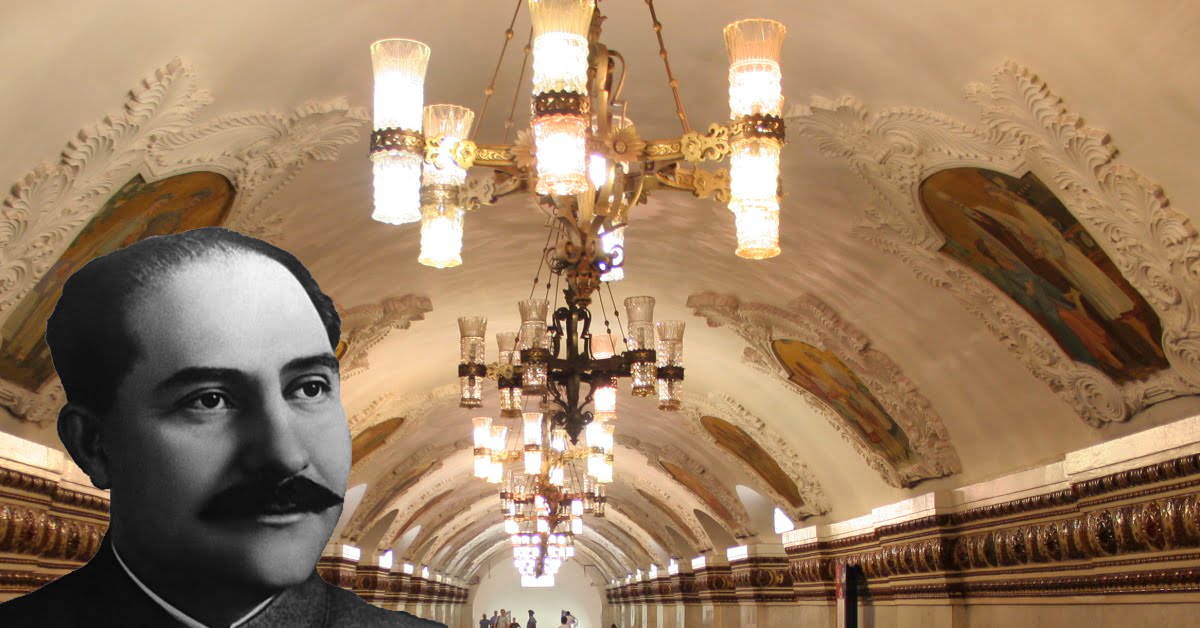Often you can read that in mid -October 1941, in the conditions of catastrophic proximity of German troops to the borders of Moscow, the Soviet leadership ordered to destroy one of the main transport arteries of the capital. We checked if it was true.
Here's what the project reports about this episode Arzamas: “When on October 15, 1941 the Germans came close to Moscow, Kaganovich gave the order to close and destroy the metro so that the enemy would not go. On October 16, the city plunged into panic, and the metro for the first time in its history did not open. However, by the evening it became clear that Moscow would be able to defend, and the order to destroy was canceled. ”
Similar information can be found on many sites, among which Lenta.ru, "History.rf" Russia Beyond, "Other city", Moscowmap, "Mosland" and others. Internet resource "Russian seed" He directly calls October 16 "during the day when they wanted to blow up the Moscow metro."
To begin with, let's understand what was the Moscow metro by October 1941. The transport system, without which it is now impossible to imagine life in the capital, at that time turned only six years old, and its scheme was an order of magnitude modest today:

Nevertheless, by the beginning of the Great Patriotic War Passenger flow of the Moscow metro composed About 1 million people a day, for the city, from which the last horse -owned cabmen recently disappeared, was a huge figure.
As for Lazar Kaganovich, he was the most directly related to three things. Firstly, the Moscow metro was his brainchild And even for many years he bore the name of the Iron Lazarus. Secondly, the beginning of the war caught Kaganovich as the People’s Commissar of Route of Traffic. Thirdly, shortly after the outbreak of war, Kaganovich headed the newly created advice on evacuation under the Council of People's Commissars of the USSR, and later was one of its active members. Thus, Kaganovich had certain powers to make certain powers. But were there any reason?
Alas, yes. The beginning of the battle for Moscow was unsuccessful for the Red Army. Under Vyazma Almost 700,000 Soviet fighters were captured. And on October 13, German troops took Kaluga And approached the Mozhaisk defense line. And if on October 12, Joseph Stalin signed a secret Resolution about the construction of the third line of defense of Moscow, then only three days later his signature appeared under document much more alarming content:

“In view of the dysfunctional situation in the area of the Mozhaisk defensive line, the State Defense Committee decided:
1. To instruct Comrade Molotov to declare foreign missions so that they are evacuated today in Kuibyshev. (NKPS - Comrade Kaganovich provides a timely submission of compositions for missions, and the NKVD - T. Beria organizes their protection).
2. Today, to evacuate the Presidium of the Supreme Council, as well as the government, headed by the deputy chairman of the Council of People's Commissars of Toments Molotov (i.e. Stalin is evacuated tomorrow or later, depending on the situation).
3. Immediately evacuated by the organs of the People's Commissariat of Defense and the People's Commissariat of Kuibyshev, and the main group of the General Staff in Arzamas.
4. In the case of the advent of the enemy’s troops at the gates of Moscow, to entrust the NKVD - Comrade Beria, etc. Shcherbakov to produce an explosion of enterprises, warehouses and institutions that cannot be evacuated, as well as all the electrical equipment of the metro (excluding water supply and sewage). ”
So, on October 15, a decision was made on the urgent evacuation of the state apparatus, and in paragraph 4 it really was about undermining the total electrical equipment of the subway (which would inevitably lead to other destruction). It’s not to the end that it seems unambiguous only the condition for the implementation of the order, because the words “the appearance of enemy troops at the gate of Moscow” could be interpreted differently. Nevertheless, from direct witnesses It is knownthat on the same day, Lazar Kaganovich gathered in the People’s Commissariat of Railways the heads of the Moscow metro and ordered: “Close the metro. Prepare in three hours of proposal to destroy it, destroy objects in any way. Trains with people to evacuate to Andijan. What cannot be evacuated - break, destroy. ”
On the night of October 15 to 16, city services Started Preparation of stations for flooding and undermining. The objects were mined, an electric cable was cut, at several stations (in particular, at Dynamo), escalators and transformers were dismantled, and the last wagons were prepared in the Electrodedo Sokol. It was on them that people along the usual railway tracks were taken to the rear.
On the morning of October 16, the metro in first And the last time in its history did not open. Among the population there was a panic that intensified the lack of information about the situation at the front and the lack of a regulated evacuation procedure. The people in the mass order began to leave the capital.

The destabilizing role was probably played by German leaflets:

According to Secret certificate Moscow City Complex of the Party and Prosecutor's Office of Moscow, “October 16-17 out of 438 enterprises, institutions and organizations, fled 779 managers. It was stolen in cash with 1,484,000 rubles, and values and property for 1,051,000 rubles. Hundreds of cars and trucks are stolen. 1551 cases of the destruction of the Communists of their party documents were identified due to cowardice in connection with the approach of the front. "
And although, as we see from the certificate, the panic continued on the next day, however, on the day of October 16, the State Committee of Defense Recognized An erroneous decision to dismantle the equipment of the subway and send the rolling stock to the rear. At 14:12 the same day, voltage was again applied to the Kirov-Frunze line. At 18:05 an order came to resume the movement, and at 18:45 the first train was launched. It took a little more time to restore traffic on the Gorky radius - it was necessary to re -enchant, unload and prepare wagons for operation, collect escalators and cable facilities. After all the work was completed, the movement on this line was resumed only on October 17.
Many know about what was next. The capital managed to defend. In December 1941, in the battle for Moscow came fracture, and next April everything ended with the retreat of German troops. The massive bombing of the capital ceased in the summer of 1942, but the Moscow Metro retained its status The main bomb shelter of the city until the very end of the war. Bomb shelter, which could disappear on one of the October days of 1941.
Is it true
Read on the topic:
1. The main documents of the Great Patriotic War
2. Metro during the war
If you find a spelling or grammatical error, please inform us of this, highlighting the text with an error and by pressing Ctrl+Enter.







